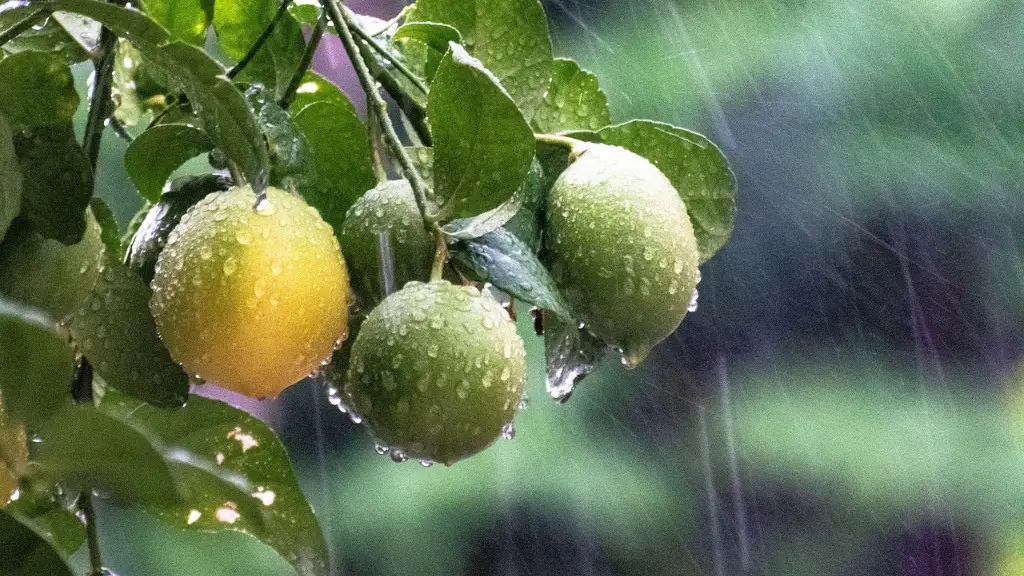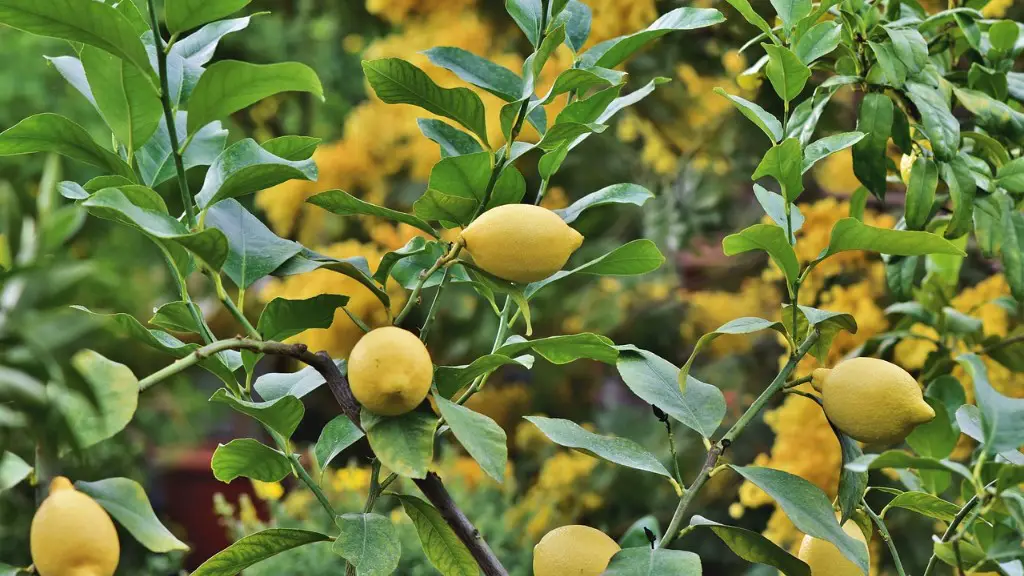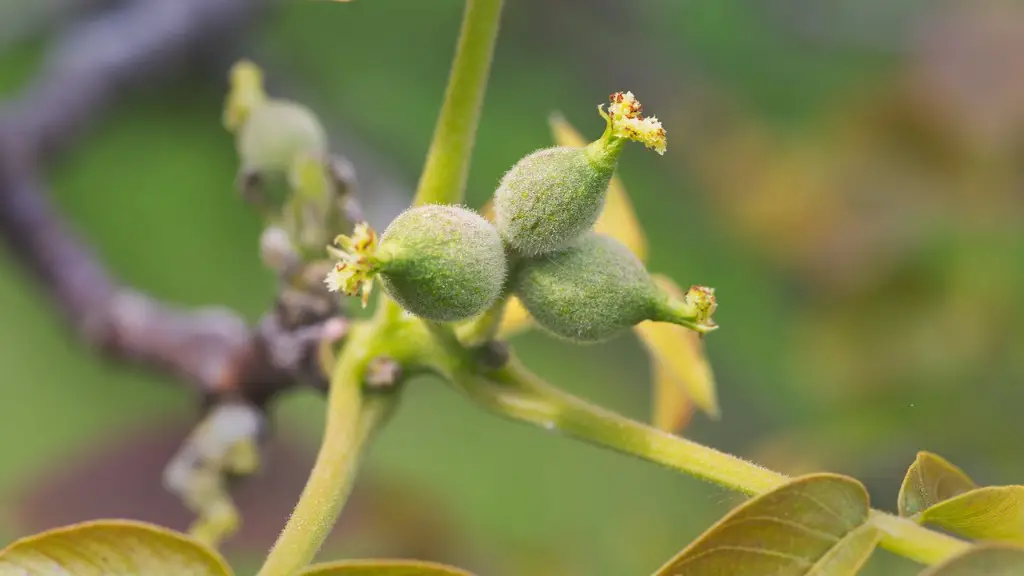The Foxtail Palm tree, native to parts of tropical Asia, is popular for its dense, skirt-like foliage and is among the most exotic trees grown as container plants. While growing a Foxtail Palm from seed is not difficult, some knowledge of the palm tree’s preferences is essential to its success.
Proper and timely care of the seed is crucial to the survival of the Foxtail Palm. The seeds should be obtained from a reliable source and propagated immediately upon arrival. The seeds need to be kept between 85 to 90 degrees Fahrenheit for optimal germination, otherwise, it can take up to one year for the seeds to sprout.
Combining an organic-rich soil with Loam and Perlite is essential to the growth of a healthy Foxtail Palm. Loam is a soil structure composed of sand, silt, and clay, while the perlite mix increases porosity. The amount of soil required is dependent on the size of the pot, but it should be deep enough to adequately cover the seed. The combination of good soil, regular hydration, and good drainage will help the Foxtail Palm to grow quickly and abundantly.
When germination takes place, add a light fertilizer to the soil to promote growth and keep the soil moist but not soggy. Foxtail Palms need generous amounts of water during the hot season and less frequent water during the cool season. However, be sure not to overwater the plant to avoid root rot.
Foxtail Palms are sensitive to chill, making them ideal for growing in a warm climate; however, cool temperatures can cause the palm to stop growing and its leaves to wilt or defoliate. As a tropical species, it also requires a lot of natural light and good air circulation. Keep Foxtail Palms away from strong winds, otherwise, it can lead to root damage and toppling of the tree.
In terms of pruning, this is only necessary to remove dead or dying fronds, yellowing leaves, and any pest infestations. These problems should be taken seriously, as it can damage the health of the Foxtail Palm tree.
Although a bit intricate in terms of care, Foxtail Palms are undeniably a beautiful, low maintenance tree. Given its elegant features, it is no surprise that the Foxtail Palm has become popular for home gardens and high-traffic areas.
Pest and Disease Control
Foxtail Palms are generally resilient to pests and diseases; however, some of the most common are mealybugs, spider mites, fungal diseases, and root rot.
Mealybugs are small white insects that feed off of sap from the leaves and stem of the Foxtail Palms. To eliminate an infestation, misting the plant with a mixture of soapy water and neem oil usually suffices.
Spider mites are tiny, eight-legged creatures that can cause plants to become stunted and yellow and may leave cobwebs on the leaves. Spraying the plant with a garlic-based pesticide is one way to get rid of spider mites.
Fungal diseases, caused by over-watering and lack of ventilation, can cause discolored patches on the leaves as well as root rot. To prevent fungal diseases, always ensure good air circulation and avoid overwatering.
Lastly, root rot is the result of too much dampness and poor soil drainage. To prevent it, inspect the soil often and provide organic-rich soil with proper drainage.
Propagation and Repotting
Foxtail Palm is slow-growing and can remain in the same pot for several years. However, as it matures, it will require repotting into a container with fresh soil every few years. To propagate, simply use a sharp knife to cut off a mature frond and plant it in a well-draining container of soil.
Foxtail Palms do not propagate from seed indefinitely; instead, the seedlings will produce new fronds each year, making it necessary to replace older fronds with new one as the tree grows. To encourage the growth of new fronds, use a balanced, water-soluble fertilizer on the Foxtail Palm every other month.
When propagating, be certain that the Foxtail Palm is in a warm environment with a porous potting soil mixture and adequate humidity. Keep track of the water levels and check the soil often to ensure that the roots are not over-watering.
Foxtail Palms are also easy to propagate via stem cuttings. Simply detach a healthy stem from the plant and let it dry for a few days before planting. While cuttings do not usually produce a well-formed plant, they are still suitable for growing Foxtail Palms.
Boosting Plant Health
Take care to check the Foxtail Palm often for insect or disease damage. A healthy Foxtail Palm should have green, sturdy fronds and an outward appearance of fullness and life. Inspect the root system regularly for evidence of brown or dark patches, a sign of fungal disease, and for stunted growth, a sign of root rot.
Foxtail Palms also require a small amount of fertilizer in the growing season for healthy growth and lush foliage. A few sprays of a balanced, slow-release fertilizer every three to four weeks will do the trick.
When grown outdoors, the Foxtail Palm prefers to be planted in an area with plenty of sun and well-draining soil. Indoors, keeping the plant near a sunny window is ideal. Either way, should the Foxtail Palm need to be placed outdoors, remember to keep it away from strong winds, as these can damage the petioles and break off the fronds.
Since Foxtail Palms do not usually develop deep roots, they can be grown in a shallow pot since they don’t need much growing media. The ideal depth should be approximately four to six inches, allowing a bit of air to reach the roots.
Bloom and Fruiting
Foxtail Palms will not typically flower or fruit until after five years of growth. However, well-cared for Foxtail Palms may bloom as soon as three years. If a Foxtail Palm does bloom, it will produce yellow, tube-shaped flowers that will attract bees and other pollinators.
Fruiting is less common but can occur during the spring or early summer months and is indicated by the presence of bright red seed clusters. Seasonal pruning of flower clusters and dead leaves is recommended to promote the health of the Foxtail Palm and stimulate the growth of new fronds.
Soil Amendments
In order to ensure optimal health and growth of the Foxtail Palm tree, soil amendments may be necessary. When purchasing soil, look for a mixture rich in organic material and sandy soil with a neutral pH level. Adding a balanced fertilizer every other month during the growing season is also recommended.
It is also important to consider the drainage of the soil, as it is vital in preventing root rot. Achieving good drainage could involve adding sand or perlite to the soil to reduce the levels of calcium and increasing the porosity of the soil.
A good way to tell if the soil has proper drainage is by inserting a chopstick into the soil. Remove it after a few seconds and if there is no residual soil clinging to the chopstick, the drainage should be good.
Conclusion
Being a tropical plant, the Foxtail Palms require warmth, light, and moisture to thrive. However, with consistent upkeep and regular inspection for signs of disease or pest infestations, the Foxtail Palm can be a magnificent addition to an outdoor or indoor garden.





